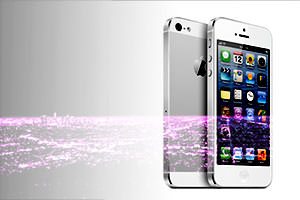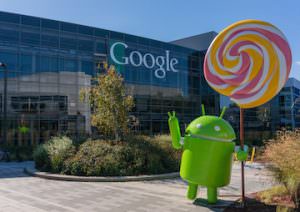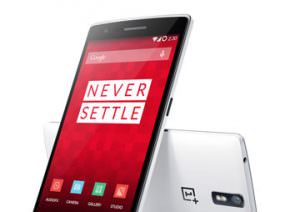Review of the iPhone on T-Mobile: No Bullshit
Not so long ago, T-Mobile was suicidal. Now it wants to be the first pro-consumer cellular network.
Less than a month ago, T-Mobile CEO John Legere announced that his company would “stop the bullshit” in a bid to become the first cellphone network that is pro-consumer. “Carriers are really nice to you,” he said. “Once every 23 months.”
Not so long ago, T-Mobile was suicidal. Verizon, AT&T and even Sprint all had the spectrum they needed to build an advanced LTE (Long Term Evolution) network. (For the non-nerds out there, LTE is the present and future of cellphone data transmission — much faster than what T-Mobile currently has; you might call it real 4G. “Spectrum” refers to the radio frequencies leased by the public to the networks. It is a finite resource, and the medium for all cellular voice and data signals.) Trailing its rivals and stretched thin, Deutsche Telekom, T-Mobile’s German parent, decided to unload America’s last-place national cellular network into the welcoming arms of AT&T. Federal regulators nixed that acquisition, but T-Mobile had shrewdly negotiated a backup plan and because the merger failed, AT&T was forced to fork over enough spectrum and cash to allow T-Mobile to build a proper 4G network, as all of its rivals have done. Out of the ashes of AT&T-Mobile rises a company at least competitive with third place, and perhaps something much more exciting.
Legere had me at “bullshit,” and I knew after listening to the rest of his sales pitch that I would find myself doing two formerly unthinkable things. First, I would leave Verizon’s first-class network, with a penalty of $200, to wait once again in 3G purgatory for another LTE rollout. T-Mobile may be building an LTE network, but these things tend to take a lot of time. Second, I would go back to the iPhone after many happy years of Android freedom.
Before I get to my feelings about T-Mobile’s new iPhone, which is the same iPhone everyone else has but modified slightly to take advantage of the provider’s network bands, let me summarize Timo’s strategy and why it appeals to me.
The two-year contract model that the other three major carriers use to lock in customers and subsidize the cost of phones really works if you’re a network operator. It really works for most consumers, too. Who needs a new phone more than once every two years? Also, most people would prefer to pay $200 for a top-of-the-line phone than the $700 or so the companies might otherwise charge. But the industry is evolving at a pace we haven’t seen since the advent of the personal computer, and for gadget lovers such as myself, the months between upgrades pass glacially. Also, knowing that their customers are theirs for two years gives top-tier carriers AT&T and Verizon a terrible disincentive to provide quality service. So, step one of stopping the bullshit is to kill the two-year contract, and T-Mobile has done that.
Step two is to find a way to keep the cost of phones low. T-Mobile’s solution is to offer an installment plan. Think of it as zero-percent financing. In the case of the iPhone, for instance, subscribers new and old can pay $579.99 for the phone outright (that’s less than the other carriers and Apple charge off-contract), or they can pay $99 upfront and $20 a month until the phone is paid off. Isn’t that just like a contract? No, because at any time, the customer can pay off the phone and quit T-Mobile. And if a newer, better iPhone comes out, you don’t have to wait until some arbitrary date to get a good deal. Just pay off the old phone (and sell it on eBay or back to T-Mobile) and finance the new device.
Step three is to offer low-cost, unlimited service. T-Mobile is charging $70 a month for unlimited voice, text and data, and that includes 500MB of tethering (using your phone as a mobile Wi-Fi hot spot). You can pay more for extra tethering bandwidth, but there is no unlimited tethering plan at this time.
There’s more to like about T-Mobile. For one thing, the company is one of the few telecoms that resisted the Bush administration’s warrantless surveillance efforts. Also, Timo’s HSPA+ network, while misleadingly labeled 4G, is significantly faster than you might expect. If you exceed your data limit, the carrier will downgrade you to a slower speed, rather than charge you a penalty. And T-Mobile customers speaking to one another on select devices (the iPhone and newer Samsung Galaxy phones) will hear voice quality that sounds more like a Skype call than the fuzzy blather that sounds more or less as clear as it did on the old Motorola StarTAC.
Despite those pluses, T-Mobile has a deserved reputation for poor service and, for a long time, it hasn’t had the best phones. The company promises that’s all about to change, and three weeks after its “stop the bullshit” news conference, T-Mobile started selling the iPhone for the first time. I waited in line to buy one.
This isn’t my first iPhone. I was the second person I knew to buy the groundbreaking original, the one that changed everything and cost only $600 — on contract. I also owned a 3Gs. Eventually, I got sick of Apple’s stubborn refusal to innovate while Google blazed past, adding features to Android like turn-by-turn navigation, voice-to-text, cloud-based services, wireless syncing and on and on. (Many of those things have come to the iPhone, but almost begrudgingly and not without flaws.) I also got sick of Apple’s overbearing control of the device — why should it get to choose my Web browser, my mail program, my keyboard? On Android, the user is free to change virtually any aspect of the experience. So I stopped complaining and switched, and I’ve been very happy.
But part of me, the sickest part, the part that got a pang of nostalgia every time I heard the marimba ringtone on someone’s phone, missed the bastard. And so, for reminiscence and other, more practical reasons I’ll get into below, I’ve gone back.
As a piece of software, pure Android — that is to say the version of the operating system that has not been molested by a carrier or manufacturer and is generally available only from Google directly — is generations beyond what’s used on the iPhone. It’s hard for me to convince my iPhone-loving friends and family of this, but Android devices have actually gotten simpler and less complicated than iPhones, which, on the software side, suffer from feature creep. As Apple has glommed on to new advancements, such as Siri and navigation and a new notification system, the iPhone’s software has become more opaque, less consistent, and something you have to be familiar with in order to use efficiently. This used to be the case, oddly enough, with Android. Although you can still tweak and change Google’s OS in myriad ways, the company has streamlined the interface to the point where it is more elegant and easy to use than Apple’s iOS.
A good example of this is the settings screen. First of all, on Android phones, it’s easily accessible from a number of places, and changing popular settings, such as whether your Wi-Fi and Bluetooth are on, can be done in a heartbeat. Compare that to the iPhone, which has you clawing into a brier patch of menus and submenus. Where do I make changes to iTunes Wi-Fi sync? The general menu, it seems, not the iTunes menu or the Wi-Fi one.
I also prefer how Android phones handle notifications. The iPhone more or less copied Android’s window shade style, but the execution is better in the original. On my Android device, I could quickly triage notifications as they came in, or I could clear them all with one button, and I could do so from the lock screen. The iPhone requires that I use the apps themselves to clear my notifications. Speaking of the apps, I miss how Android organized them alphabetically, so I didn’t have to search endlessly for them. There are other little things I’ll have to get used to. I miss having a back button. I miss the way Android would automatically gather frequently called numbers below my list of favorites. I miss the keyboard, which is, perhaps for the first time, much better than the iPhone’s.
There are very good Android phones, including the best “pure” Android one, available for T-Mobile. I was close to buying a Nexus 4. But, unlike the iPhone 5, it lacks the ability to take advantage of T-Mobile’s forthcoming LTE network. And then there’s the other side of the coin.
Android devices may excel in software, but the iPhone 5 is one of the best pieces of hardware I’ve ever owned. It is beautiful, and, in almost every category, superior to the Android phone I was using. The camera is better, the battery life is better, the materials feel luxurious like an old Sony mini tape recorder and, best of all, I think Apple has settled on the perfect form factor. The device is finally big enough, but the designers didn’t go overboard. It’s still phone-sized, unlike my mini-tablet of an Android, a trend in phones that has become hugely popular.
So, most of us by now know that the iPhone is a great device. But what is it like on T-Mobile’s network? Here in Los Angeles, it’s surprisingly good. I’ve missed a few calls, which never happened on Verizon, but then I don’t use my phone that often for voice calls anyway. It’s a portable computer, and I was much more concerned about leaving Verizon’s hyperspeed LTE network for what amounts to glorified 3G.
Although I don’t get the same speeds, T-Mobile’s HSPA+ network is fast enough that it doesn’t impact my life that often. I can still drive around town streaming Spotify radio at “extreme” quality, Netflix looks great and I’ve had no hiccups downloading apps or using the Web on the go. The most frustrating exception was a recent trip to a basketball game, where my new iPhone was rendered inert. As the Laker Girls hoochie-danced to pop music while wearing Verizon T-shirts, probably to taunt me, I recalled with longing how fast and reliable my phone had been on that network in that arena.
Switching from Verizon to T-Mobile is like moving from a Porsche to a Prius. There’s a lot to miss, and I feel a bit reactionary and overly frugal, but for those of us who care about more than speed, there’s good reason to do it.
Your support matters…Independent journalism is under threat and overshadowed by heavily funded mainstream media.
You can help level the playing field. Become a member.
Your tax-deductible contribution keeps us digging beneath the headlines to give you thought-provoking, investigative reporting and analysis that unearths what's really happening- without compromise.
Give today to support our courageous, independent journalists.







You need to be a supporter to comment.
There are currently no responses to this article.
Be the first to respond.